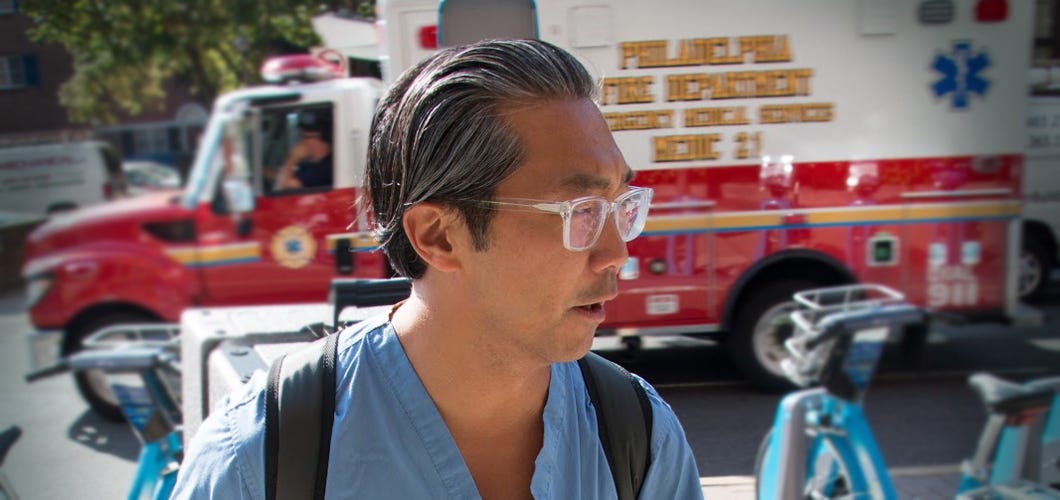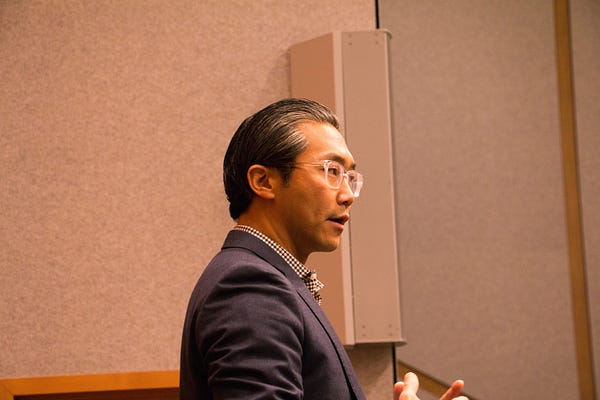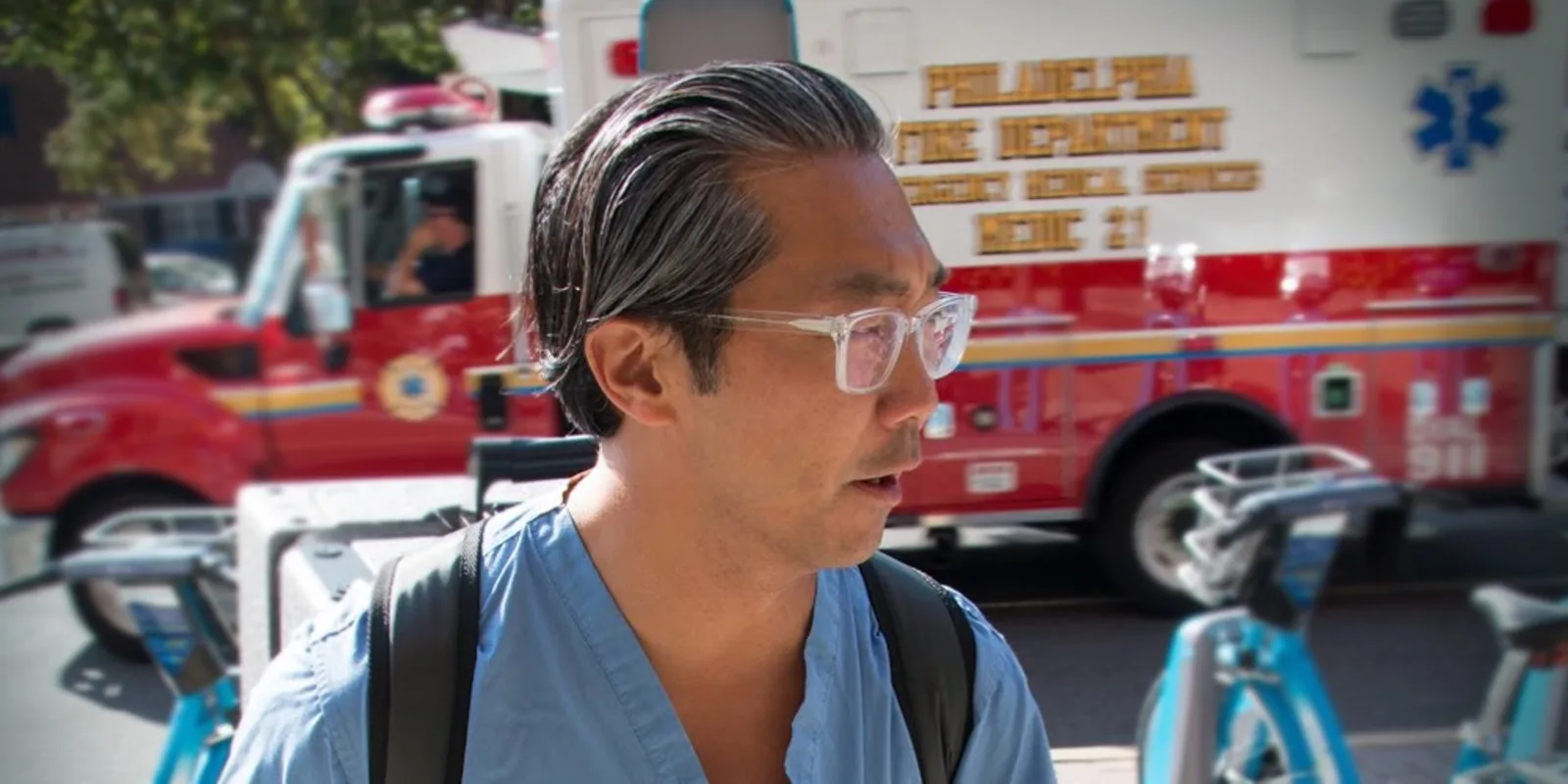
Dr. Bon Ku is an emergency medicine physician and faculty member at Sidney Kimmel Medical College. He is the founder and director of JeffDESIGN, the first ever “design thinking” program for medical school students.
As a physician in one of the most underprivileged cities in America, Dr. Bon Ku had a vision to make Philadelphia healthier. He yearned to address large-scale problems, such as healthcare inequality, urban homelessness, and child obesity. He aspired to make a difference beyond the doors of the emergency room and understand patients apart from their diseases.
But, he was never trained to do so.
AS: What were some of the personal problems you were faced with as an ER physician?
BK: Working in the ER, I felt that I lacked the tools to affect the population, as a whole, here in Philadelphia. Granted, I felt comfortable being able to treat diseases. If a patient came in with an elevated blood pressure, I was trained to know which IVs and antihypertensives to give them. I knew to check their creatinine and check for renal failure. But, I was frustrated because I felt that I was just treating the complications of diseases, and not really making the patients or my community healthier.
A person’s neighborhood is determining their life expectancies and life outcomes. This is an issue that should bring us together. We should care about this inequality; it shouldn’t exist. Being in the emergency room, I would see patients suffering from the same thing over and over again; I was getting cynical. I was treating them and streeting them. I never wanted to go into medicine and have this type of attitude. I was frustrated and helpless. I felt powerless.
After becoming burned out by the restrictions of his medical education, he decided to take a year off and study public policy at Princeton. There, he explored a new form of thought: design thinking.
According to Ku, design thinking is a methodology that calls for a more creative and hands-on approach to solving problems. With a “bias towards action,” design thinking trains individuals to rapidly prototype, test, and iterate solutions.
Through design thinking, Ku was able to activate the creative muscles that had so long been stifled. He began reframing the problems he saw in health care, and, slowly, he discovered the tools to tackle them. He returned to Sidney Kimmel later that year, refreshed and excited to go back to medicine.
AS: How did design thinking help relieve your burnout, and why is it so important to medicine?
BK: When I returned to medicine, I [saw] some of the same problems as before, but, now, I had the ability to develop something that would fix those problems. So, being able to think outside the box, being able to be creative and finding solutions to problems [gave] me hope.
[…] Design thinking helps us tolerate ambiguity. In medicine, we create solutions without bringing our patients into the conversation. It’s a very unilateral decision making process. I think what design thinking really encourages us to do is to get the perspective of all the stakeholders in the room and really reevaluate the problem. We often think we know what the problem is, when we really don’t.
It also allows us to understand the human behind the patient — that a patient is more than their 15 minute office visit once or twice a year. At the core of design thinking is building empathy for patients and being able to understand their diseases in the [context of] their backgrounds. For me, design thinking has helped me feel less incapacitated when thinking about our broken healthcare system.
Based on his experiences, Ku was inspired to share his learnings with budding physicians at the medical school. In collaboration with Sidney Kimmel’s dean, Dr. Mark Tykocinski, he founded JeffDESIGN, a four-year elective-based track that immerses medical students in design thinking — the first program of its kind.

Through this track, students are tasked with solving real-life medical problems using design thinking. After undergoing workshops and lectures to learn design thinking essentials, they are paired with faculty physicians and introduced to healthcare challenges. Over the course of the year, the students then work in teams to build and test problem-solving prototypes.
However, they are not limited to the walls of the hospital. Often, Ku takes his students to the streets of Philadelphia and has them engage in conversation with the general public. He believes that to improve health care, they must start with the people — the “end users that we’re trying to help in the first place.” They also partner with non-medical organizations to initiate public health interventions that will affect the greater community. Currently, Ku and his team are working to improve the design of playgrounds to increase the activity levels of children.
AS: What are your personal goals for the students in the program?
BK: I want them to become physicians who are prepared to practice medicine in the 21st century. It’s not my goal to make them designers or go into startup communities. I think this process will help them become better physicians. And, it’ll also help them from becoming burned out. It’ll give them the tools to see the challenges they’re facing in a new light. And, it will provide them with a survival kit so that they’ll be able to take a bite size chunk out of these challenges and prototype a solution for them.
That is my hope. It’s definitely not for them to become designers. I don’t consider myself a designer. Truthfully, we all have the ability to design — it’s just a matter of realizing it and implementing it.
In addition to his own efforts at Sidney Kimmel, Ku actively advocates for similar programs to be integrated in medical school curricula across the country. He hopes that, in the future, creativity in medical students will be celebrated rather than repressed. He also encourages practicing physicians, who were not trained in design thinking, to step out of their comfort zones and begin devising solutions to the problems they face.
AS: Do you believe we need to better promote creativity in medical education?
BK: I think we need to not deter people who are creative from entering medicine. I think creativity is siloed into “creative fields,” such as music or arts. But, creative minds are critical to the healthcare system — to provide better care for patients. And, we don’t want physicians to become technicians.
I hope that, in training med students, we have a safe space to prototype and test solutions. Design thinking is one way to do that, I don’t think it’s the only way. But, there should be room for this type of framework in undergraduate medical education.
I think what’s exciting is that this resonates with students, because they don’t want to just become great memorizers. They want to be able to use the right side of the brain — they want to be creative. For too many decades, we’ve beaten creativity out of medical students, when really, we want to harness that.






